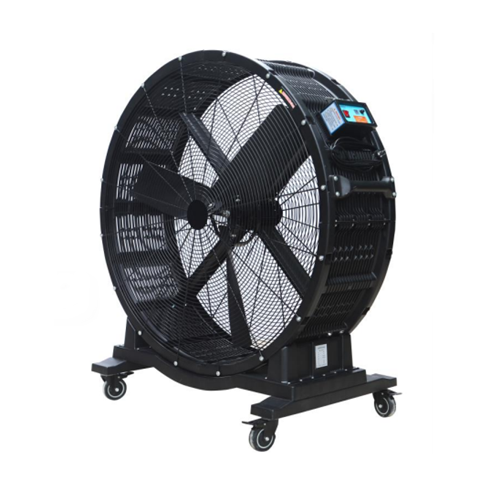When it comes to ventilating large spaces like warehouses, factories, or aircraft hangars, standard fans often fall short. That’s where giant fans come in. Also known as high-volume low-speed (HVLS) fans, these powerful units are engineered to move massive volumes of air while consuming remarkably little energy.
But what exactly is a giant fan, and why are they the go-to solution for many industrial and commercial facilities? Let’s take a closer look.
Defining a Giant Fan
A giant fan is a large-diameter ceiling or wall-mounted fan—usually ranging from 2 to 7 metres in diameter—designed to circulate air over a broad area. Unlike traditional high-speed fans that focus airflow into a narrow stream, giant fans use slow, steady rotation to move air gently but efficiently across the entire space.
This design makes them ideal for large, open areas where air can become stagnant, humid, or overheated.
How Do Giant Fans Work?
Giant fans operate on the high-volume low-speed (HVLS) principle. Their large blades spin at a low RPM, pushing air down and out in a wide, cylindrical pattern. This airflow reaches all corners of the space, mixing air layers and eliminating hot or cold zones.
In winter, HVLS fans can also be used in reverse mode to destratify air—pushing warm air trapped near the ceiling back down to ground level, improving heating efficiency.
Where Are Giant Fans Used?
These fans are purpose-built for expansive, high-ceiling environments where airflow is difficult to maintain. Typical applications include:
- Warehouses and logistics centres
- Manufacturing facilities and workshops
- Aircraft hangars
- Agricultural sheds and barns
- Sports arenas and gymnasiums
- Event halls and commercial showrooms
In these settings, effective air movement isn’t just about comfort—it can directly impact productivity, safety, and energy consumption.
Benefits of Using a Giant Fan
1. Superior Air Circulation
Giant fans eliminate pockets of stagnant air and promote consistent airflow throughout the space.
2. Improved Worker Comfort
A steady breeze can reduce perceived temperatures, helping to prevent heat stress and fatigue in warmer months.
3. Energy Efficiency
When used in conjunction with HVAC systems, giant fans reduce the need for excessive cooling or heating—leading to significant cost savings over time.
4. Humidity and Condensation Control
In humid environments, moving air helps manage moisture build-up, preventing corrosion, mould, and slip hazards.
5. Reduced Carbon Footprint
Thanks to their low power consumption and ability to optimise existing heating and cooling systems, HVLS fans contribute to a more sustainable facility.
Are Giant Fans Noisy?
Despite their size, HVLS fans are designed to operate quietly. Their slow-speed motors and aerodynamic blade design produce minimal noise, making them suitable for use in noise-sensitive areas like gyms, public venues, or offices.
Choosing the Right Giant Fan
When selecting a fan, consider:
- Ceiling height and available mounting space
- Total floor area
- Existing ventilation or HVAC systems
- Any obstructions (e.g. racking or beams)
- Environment (indoor vs semi-outdoor)
Fanquip’s giant fans are Australian-made and built for harsh industrial conditions, offering a long-lasting, energy-efficient solution for large-scale airflow management.
Key Takeaways
A giant fan isn’t just a big ceiling fan—it’s a smart investment in air quality, energy efficiency, and workforce comfort. Whether you’re cooling a warehouse in summer or redistributing warm air in winter, a well-chosen HVLS fan can dramatically improve your facility’s environment.
Fanquip’s range of industrial HVLS fans is specifically engineered to deliver consistent performance in Australia’s toughest environments. If you’re looking for a powerful, low-maintenance way to move air in your facility, talk to us about the right giant fan for your needs.










